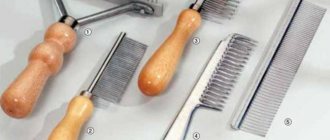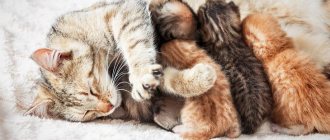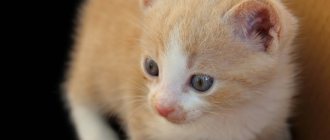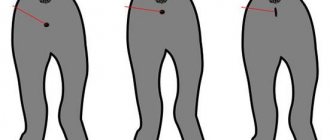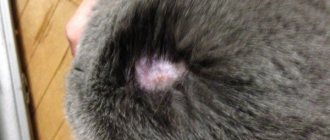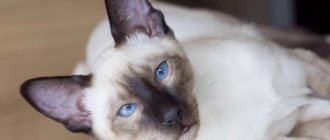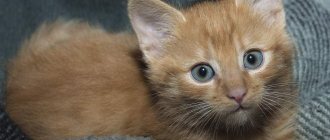The first eight weeks of a kitten's life are a whirlwind of developmental changes. As newborns, kittens are defenseless, blind and fit in the palm of your hand... but by 8 weeks of age they are running, playing and looking like miniature cats.
Each week the kitten will have different needs for feeding, bathing assistance, medical support and warmth. It is important to know how to tell a kitten's age to determine what kind of care it needs and whether it is developing normally. Here's what you need to know about the key developmental stages of a kitten's first eight weeks of life.
Your kitten: newborn
- Physical development : Newborn kittens have their eyes closed and ears folded. They will have no teeth, and their gums, nose and paws may be bright pink. They do not yet have a gag reflex or the ability to thermoregulate. The umbilical cord will be attached and fall off on its own between 4 and 5 days of age. The claws will not extend. At this age they can neither hear nor see; they can navigate the world around them only by smell and by seeking warmth and comfort.
- Behavioral Development : Newborns will sleep most of the day. Newborns cannot defend themselves or walk, but can move around by crawling. A healthy newborn will squirm and meow when picked up.
- Average temperature : 35-36 ℃ at birth. It is important to provide a gentle heat source to keep the kitten warm and stable. The kitten's ambient temperature should be between 30-32 degrees Celsius at this time.
- Average weight : 50-150 grams
- Care Information : Newborn kittens are with their mother at all times, as mothers will provide food, cleaning, warmth, and bath support. If the mother is not present, they should be bottle-fed and kitten formula every two hours under the supervision of knowledgeable persons, encouraged to go to the toilet, and maintained at an appropriate temperature.
© shutterstock
How to find out the gender of an animal older than a month
At this time, the genitals of pets are already more pronounced. In cats you can find the foreskin and testicles, in females you can find the anus and a narrow slit. Before deciding on the choice of a pet of a specific gender, they look under the tail to determine it.
The use of this method for recognizing the gender of a newborn kitten (photos of babies are presented in the article) is considered the most reliable. The probability of correct identification is 90%.
Your kitten: week 1
- Physical Development : Week-old kittens will have closed eyes but no umbilical cord. They won't have teeth anyway. The claws will still not extend. After about 7 days, the ear canals will begin to slowly open and the ears will open slightly. Between 8 and 12 days, the eyes will begin to slowly open, which may occur over a period of several days. One eye may open faster than the other. It is important that the kitten's eyes open at a pace that is comfortable for him. All kittens will be born with blue eyes, which will develop into adult eye color as they age.
- Behavioral Development : One-week-old kittens, although larger than newborns, will still be largely uncoordinated and sleep most of the day. At this age, they should be able to hold their head up, move around by moving their limbs, and be active and vocal when held.
- Average temperature : 36-37 ℃. It is important to provide a gentle heat source to keep the kitten warm and stable. At this time, the kitten's ambient temperature should be about 26 degrees.
- Average weight : 150-250 grams. By 1 week of life, the kitten should approximately double its birth weight.
- Care information : Week-old kittens belong to their mother permanently. If the mother is not present, they should be bottle-fed and kitten formula every two to three hours by a knowledgeable caregiver, encouraged to go to the toilet, and maintained at an appropriate temperature.
https://youtu.be/4_59mpz_sts
What not to do
Photos of newborn fold-eared kittens are touching pictures that you can look at endlessly. Despite this, there is no need to disturb the kids again. You should also follow some rules:
- You should not tear your pet away from its mother while feeding.
- You cannot lift a kitten by its tail.
- If possible, you should try not to touch the babies until they reach three weeks of age. Some cats, sensing a foreign smell, abandon the baby.
- It is prohibited to put pressure on the genital area during the examination.
Your kitten: 2 weeks
- Physical Development : At 2 weeks of age, kittens' eyes will be fully open and blue. They will have poor eyesight and will not be able to see over long distances. The ear canals will be open, and the ears will be small and round, like a bear cub. If you open the kitten's mouth, you will find that there are still no teeth. The claws will still not extend.
- Behavioral development : Two-week-old kittens will become more coordinated and begin to take their first steps. They will be unsteady on their feet and uncoordinated. Kittens at this age may be curious about the world around them, will not yet play and will spend most of their time sleeping.
- Average temperature : 36-37 ℃. It is important to provide a gentle heat source to keep the kitten warm and stable. At this time, the kitten's ambient temperature should be about 26 degrees.
- Average weight : 250-350 grams
- Care information : Two-week-old kittens live permanently with their mother. If the mother is not present, they should be bottle-fed and kitten formula every three to four hours by a knowledgeable caregiver, encouraged to go to the bathroom, and maintained at an appropriate temperature. Kittens as young as two weeks old may begin to develop degwords.
Your kitten: 3 weeks
- Physical Development : At 3 weeks of age, kittens will have blue eyes and small ears that begin to point upward, like a miniature cat. The kitten's vision and hearing will gradually improve. At this age, the kitten begins to erupt its first teeth. The tiny teeth at the front of the mouth, called incisors, will begin to come through the gums. The kittens will gradually begin to retract their claws.
- Behavioral Development : At this age, kittens will wander around, explore their surroundings, and even begin to explore the litter box. They may begin to be interested in cat toys, although they may not yet be able to run or chase moving objects. They will sleep frequently and may begin to engage in small grooming behaviors. During this week, their coordination will improve quickly.
- Average temperature : 37-38 ℃. Three-week-old kittens still need a source of warmth, but they will be more active and may stray away from it when they are not sleeping. The kitten's ambient temperature at this time should be about 23 degrees.
- Average weight : 350-450 grams
- Care information : Three week old kittens live permanently with their mother. If the mother is not present, they should be bottle-fed and kitten formula every four to five hours by an experienced caregiver. Add a shallow litter box with non-clumping litter.
© shutterstock
Animal size and folk methods of determining ownership
You can often find out the gender of a newborn kitten (the photo below demonstrates this well) by size and weight. As a rule, females are smaller than males, more graceful and graceful. However, based on these signs alone, it will not be possible to determine with one hundred percent probability the gender of a newly born pet.
One of the popular methods says that if a kitten looks around warily and is rather indecisive, it is most likely a female. Cats, on the contrary, are characterized by courage and self-confidence. However, this rather depends on the nature of the animal.
Another method of determination is based on the pet’s habits. A bowl of food is placed in front of him and his behavior after feeding is observed. If the tail is raised up, it is a cat; if it is modestly lowered, it means a cat.
Your kitten: 4 weeks
- Physical development : At 4 weeks of age, kittens' vision and hearing will improve significantly. The kitten's teeth will continue to develop. The long teeth next to the incisors, called canines, will begin to extend through the gums. The claws will be retractable.
- Behavioral Development : Four-week-old kittens will confidently learn and develop coordination that allows them to walk, run, and even begin to play. With enhanced senses, they will be noticeably more responsive, making frequent eye contact with caregivers and reacting to sights and sounds in the environment. Their caregiving skills may be limited, but they are improving. They will use a litter box.
- Average temperature : 37-38 ℃. Continue to provide a source of heat for 4-week-old kittens, although they will likely only use it when resting. The kitten's environment should be comfortably warm and should never be below 21-23 degrees Celsius.
- Average weight : 450-550 grams
- Care information : Four-week-old kittens belong to their mother. Orphans this age should be bottle-fed every five hours, including at night. Four-week-old kittens will usually use a litter box and can be trained to use toys.
Your kitten: 5 weeks
- Physical development : At 5 weeks of age, the kitten's teeth continue to develop. The premolars will begin to emerge. The eyes will be blue, and the ears will grow and become pointed. The claws will be retractable.
- Behavioral Development : Five week old kittens will run and play confidently. They will develop communication skills with people and other animals. Their self-care skills will improve. By this age, they will have perfected their use of the litter box.
- Average temperature : 37-38 ℃. At this age, a heat source is no longer required if the environment is at a comfortable temperature of 21-23 degrees.
- Average weight : 550-650 grams.
- Care Information : Five week old kittens, if healthy, can begin the weaning process. Kittens should be given adequate amounts of "liquid manure" or wet kitten food, in addition to their mother's milk or bottle if they are orphaned. If weaning occurs, food and water should be provided at all times. Always provide supplemental nutrition and ensure the kitten maintains a healthy weight and body shape during weaning. Always provide a shallow litter box.
How to find out gender by coat color
The color of a cat's baby can also indicate its gender. In this case, newborn kittens can be distinguished by gender (photo below) taking into account the following features:
- The tortoiseshell color combines three colors - black, white and red. As a rule, its owners are female representatives of the cat family. This fact is due to the transfer of color by the X chromosome, and for the manifestation of all three tones, a pair of them is needed. Only cats have them in such quantity; males have only one X chromosome. In nature, tortoiseshell cats are found only if they are susceptible to rare genetic diseases.
- Mainly males are distinguished by their red color. If a born kitten has this color, there is a 99% chance it will be a boy, but there are exceptions to the rule.
If we talk about the thickness of the fur, it differs only in the location of the genital organs - males have much more of it, but in females it is almost completely absent.
Your kitten: 6 weeks
- Physical Development : At 6 weeks of age, a kitten's teeth begin to reach the final stage of early development. The molars will begin to appear. The eyes will still be blue, and vision and hearing will be fully developed.
- Behavioral Development : Six-week-old kittens will confidently interact with peers, fight, attack and defend themselves. They will be curious about their surroundings and will be eager to explore. They will improve their self-care skills. At six weeks old, kittens become coordinated enough to jump off furniture and land on their feet.
- Average temperature : 37-38 ℃. At this age, a heat source is no longer required if the environment is at a comfortable temperature of 21-23 degrees.
- Average weight : 650-750 grams.
- Care Information : Kittens should receive adequate amounts of wet food after weaning. Always provide access to water, food and a shallow litter box. At six weeks, kittens should receive their first FVRCP vaccine to protect against viruses (rhinotracheitis, calicivirus and panleukopenia).
© shutterstock
Juvenile period
The juvenile stage begins at approximately 11 weeks and lasts until puberty, which is four to five months. The kitten becomes hyperactive and curious. The owner’s task is to ensure his safety during this period. At the age of three months, the kitten has excellent spatial orientation, knows its name, is litter box trained and is independent of its mother. This means that this is the best time to transfer it to new owners.
The development of kittens by week ends at approximately three months. Further maturation slows down. At this time, the muscle corset is strengthened and the teeth are finally replaced. The period of puberty begins. Cats become adults at about one year of age.
Your kitten: 7 weeks
- Physical Development : All baby teeth will appear by 7 weeks of age. At this age, the kitten's eye color will change and the adult eye color will begin to appear. Kittens' testicles will begin to descend at about 7 weeks.
- Behavioral Development : Seven week old kittens will experience a burst of energy. Sleep will decrease and time spent playing will increase. At this age, kittens can run, climb cat trees, and confidently jump off furniture.
- Average temperature : 37-38 ℃. At this age, a heat source is no longer required if the environment is at a comfortable temperature of 21-23 degrees.
- Average weight : 750-850 grams.
- Care Information : Kittens should receive an adequate amount of wet kitten food and may have dry kitten food as a supplement. Always provide access to water, food and a shallow litter box.
Your kitten: 8 weeks
- Physical Development : All baby teeth will appear by 8 weeks of age. The eyes will completely change to their adult color - green, yellow, brown or blue. The ears will be proportional.
- Behavioral Development : Eight week old kittens will be energetic and independent. Their agility and coordination will be almost fully developed.
- Average temperature : 37-38 ℃. At this age, a heat source is no longer required if the environment is at a comfortable temperature of 21-23 degrees.
- Average weight : 850-950 grams.
- Care Information : Kittens should be fed canned and dry kitten food three to four times daily and can get the bulk of their calories from dry food if they choose. Always provide access to water and a shallow litter box. If two weeks have passed since the first FVRCP vaccine was administered, kittens can receive a booster vaccine at this time. If the kitten has not been dewormed, a dewormer can be administered. It's also a good idea to do a stool test to check for internal parasites. At this age, if they weigh about a kilogram and are healthy, they can be spayed/neutered, microchipped and adopted.
Pictures of a SLEEPING cat with a kitten
Kittens are incredibly energetic and, unlike puppies, sleep very little. But as soon as they fall asleep, calm reigns in the house, and we can only be touched by these sleeping babies. Growing up, these tireless mischief makers turn into real sleepyheads, ready to sleep all day long.

